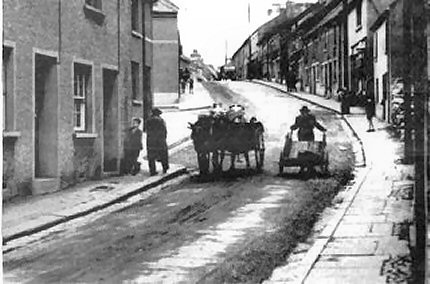I came across the following extract lately on another website and I reflected on the phrase in bold type. As a very young boy I had looked up ‘Newry’ in an encyclopedia at home, and learned that one of its chief manufactories was a ropeworks!
This reflects more on the age of that particular book that on the town’s industries of the time. However here was some proof of the ropeworks from an earlier age.
How does this, I wonder, relate to that district still known as ‘The Ropewalk’?
Surely some of you can enlighten our readership about the origin of this name?
‘Looking back at my childhood and early days of youth my happiest memories are all connected with one person, Granda William Logan of
William Logan was born on 29th August 1880, the son of George and Sarah Jane and the grandson of James Logan who, it is said, founded the first ropeworks in
Logan also built a ropeworks in High Street, Newry, Co.Down.
He erected the building where the “Patrisse Coffee Lounge” and the Banbridge “Job Centre” are situated, the gateway between these two shop fronts, (nos. 48 and 50 Newry Street) was the entrance to the ropeworks which stretched from Newry Street to a lane-way known as “Bird Lane”, later to be officially named as Townsend Street.
Across the lane from the ropeworks was a row of workers’ cottages which belonged to
James Logan died on 6th February 1867 and on his death he left property in 48 and
Granda Logan never expected to inherit the Banbridge ropeworks from his father. It was expected that the eldest son, George (Jun), would follow him into the rope manufacturing business. Another brother, James, had joined the Irish Constabulary and became a District Inspector on the police force. Joseph was killed by a Hayes Mill cart at the entrance to the ropeworks when he was only five years old. Harry the youngest brother had not made up his mind what career he wanted to follow.
Granda was always interested in a political career but did not get the chance to pursue this idea. George Logan (jun) had no interest in the rope manufacturing business and he left home to join the army. In the Boer War, during the fighting, he was buried alive three days when buildings blown up by the Boers fell on him at the “Battle of Ladysmith”.
By the time World War 1 broke out, George had risen to the rank of Major.’
